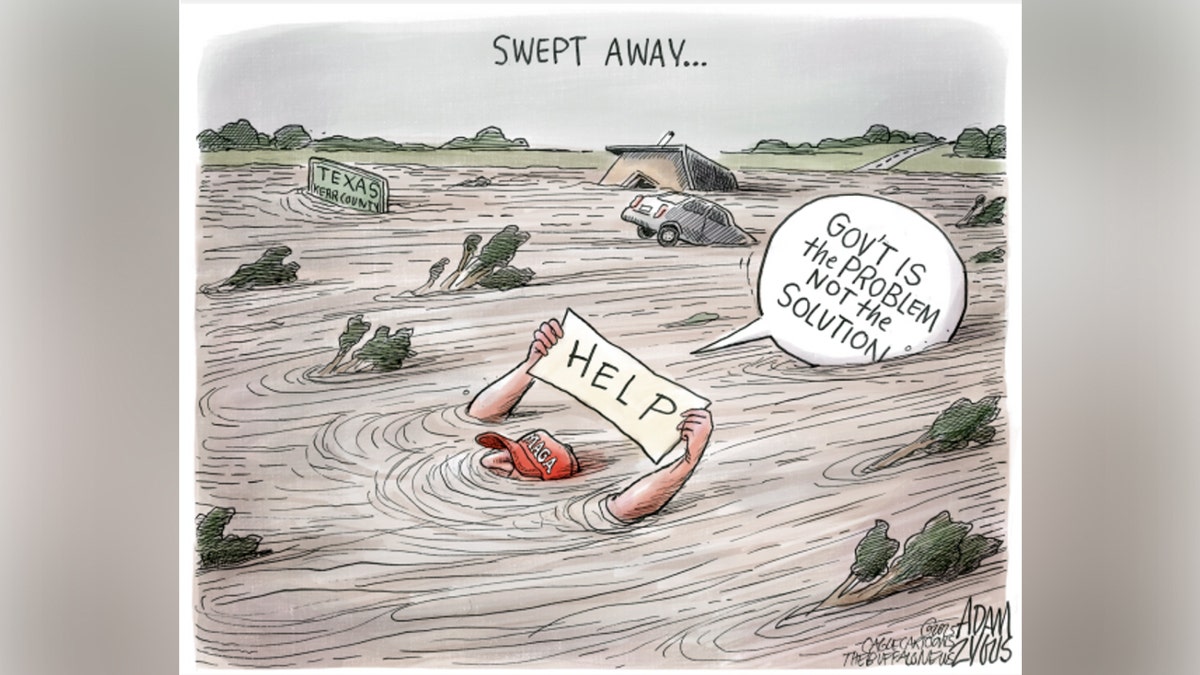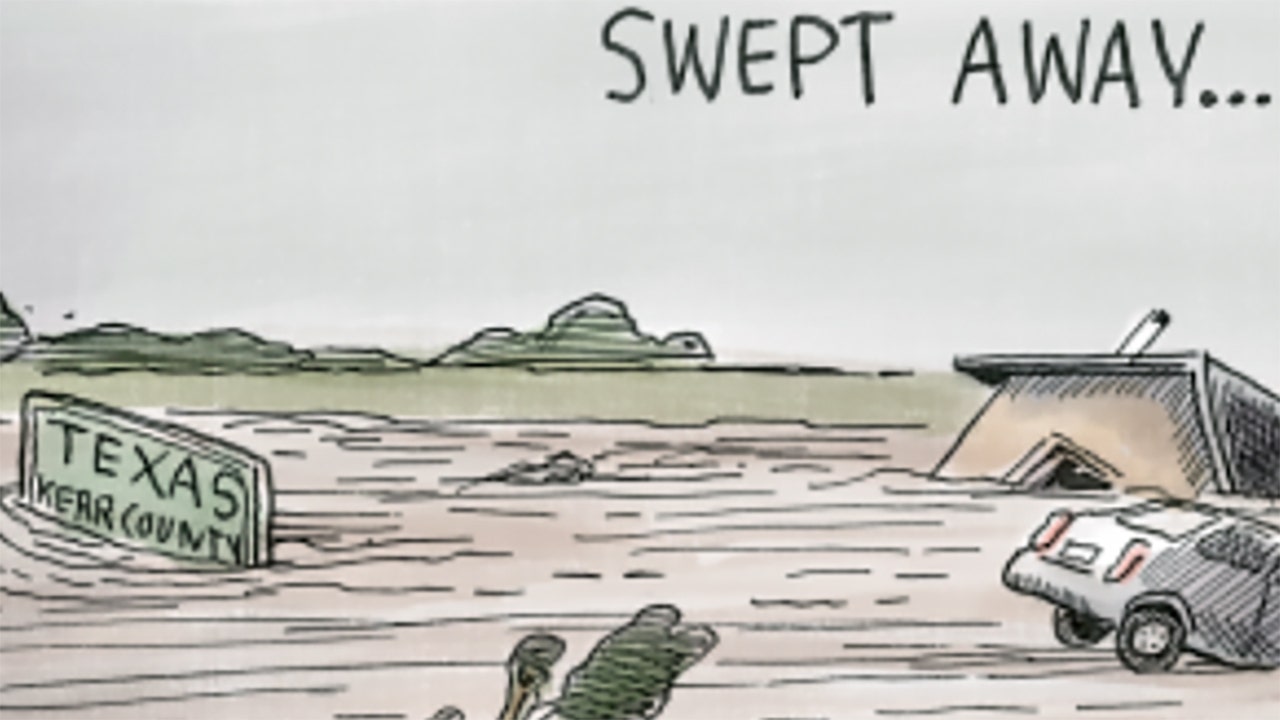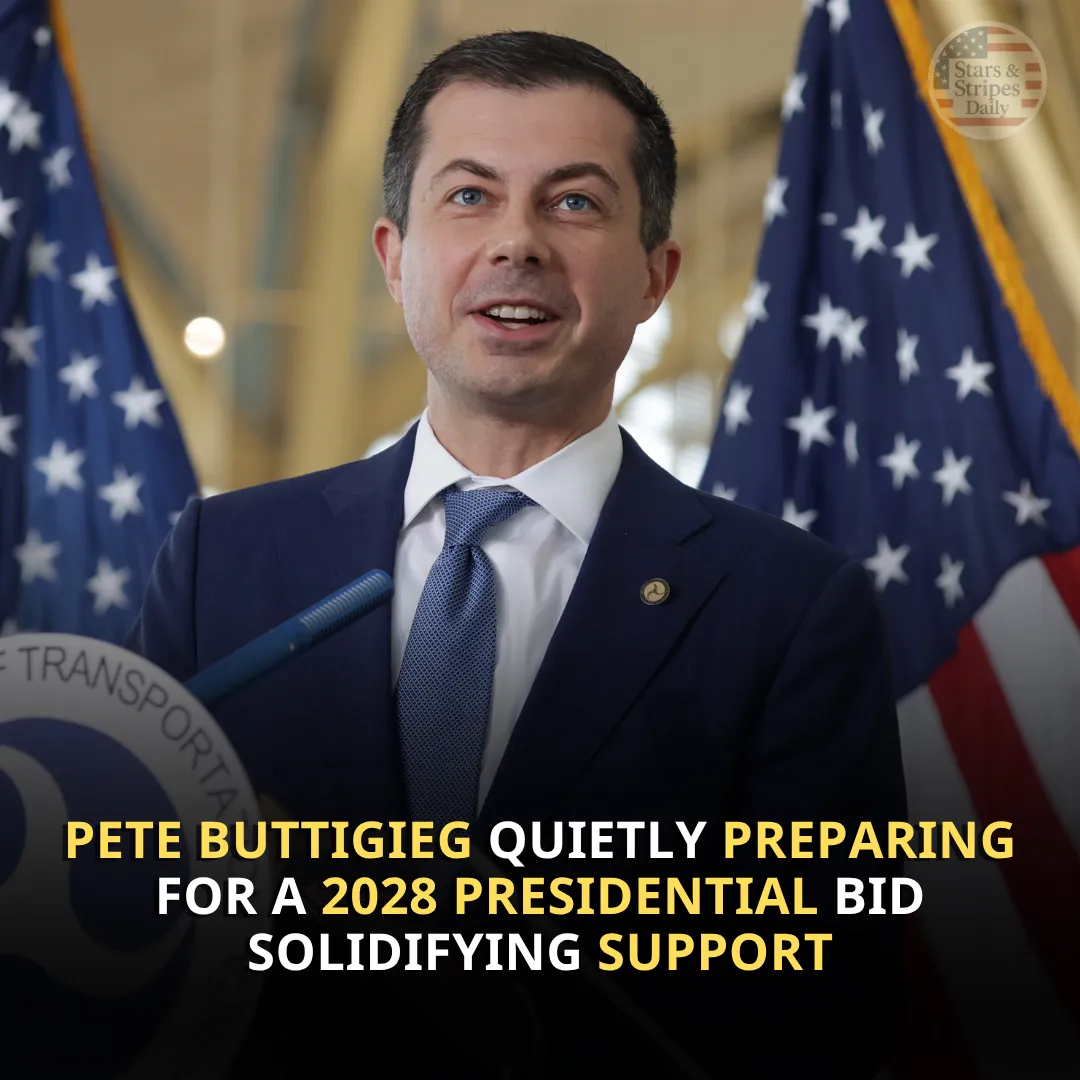
In a move that has sparked widespread outrage, a liberal-leaning media outlet is facing severe backlash for publishing a politically charged cartoon that many believe mocks the victims of the catastrophic flooding that devastated central Texas over the weekend.
The cartoon, drawn by Adam Zyglis, a Pulitzer Prize-winning artist from the Buffalo News, has ignited a firestorm of criticism, with social media users and commentators calling it “disgusting” and “evil.”
The reaction comes not only due to the cartoon’s tone but also because it appears to rely on a thoroughly debunked and false claim regarding the role of government in the tragedy.
The Buffalo News cartoon, which shows a man wearing a MAGA hat, clinging to a sign reading “HELP” while being swept away by the raging floodwaters, depicts a scene that many have found tasteless and inappropriate.
In the speech bubble coming from the man’s mouth, the cartoonist placed the phrase, “Govt. is the problem, not the solution,” a clear jab at those who attribute political responsibility to government agencies like FEMA or the National Weather Service for their role in disaster preparedness and relief efforts.
However, the cartoon seems to be based on a completely unfounded and discredited narrative, one that claims that budget cuts to the National Weather Service (NWS) were to blame for the lack of early warnings in the affected areas.
This narrative has been widely debunked, with numerous experts and independent meteorologists stating that the warnings issued in advance of the flooding were as accurate and timely as possible, given the circumstances.
Tom Fahy, the legislative director for the National Weather Service Employees Organization, clarified that there were no staffing shortages that contributed to any delays in warnings, and that the weather service had adequate resources for the task at hand.

He added that the WFOs (Weather Forecasting Offices) issued timely forecasts and warnings in the lead-up to the storm, and the only real challenge was ensuring that people actually received those messages in time.
Independent meteorologists, including Chris Vagasky, a Wisconsin-based expert, also weighed in, confirming that the weather data available in real time did not allow for precise predictions of the extent of the rainfall and flash flooding.
The difficulty, he said, was not necessarily in the forecasts but in the challenge of reaching people who needed to hear those warnings in time to evacuate or take other precautionary actions.
“The forecasting was good. The warnings were good. It’s always about getting people to receive the message,” Vagasky stated. The “last mile,” or the final steps of getting the message to those in harm’s way, was the biggest issue, he said, as people living in high-risk areas may not have received the information in a timely manner.
Yet, despite all the evidence to the contrary, Zyglis' cartoon perpetuated the false claim that government funding cuts had somehow hindered the ability to prevent or respond to the storm.
The cartoon, which was published in the Buffalo News over the weekend, has drawn strong condemnation from various quarters, with many accusing Zyglis of being callous and indifferent to the suffering of the victims of the floods.
Social media users have expressed their outrage at what they perceive as a gross mischaracterization of the situation, accusing the artist of using a natural disaster as a vehicle to score political points.
One particularly vocal critic wrote on Twitter: “What kind of sickness are you afflicted with to make light of little girls, many still unaccounted for, so you can score cheap political points on what’s even questionable issue? Many parents have yet to pull their 8-year-old girls out of the mud.”

The emotional weight of the situation, particularly the deaths of children and the widespread devastation caused by the flooding, has only intensified the backlash against the cartoon.
At the time of writing, the floods are believed to have claimed more than 100 lives, with many families still waiting for news about missing loved ones.
For many critics, Zyglis’ cartoon—published mere days after the disaster—seemed not only tasteless but actively harmful, reducing a tragic loss of life to a political caricature.
One commenter summed up the anger felt by many, saying: “Disgusting. And to think it wasn’t just the cartoonist who made this, but this was okayed by the editor and where no one there apparently tried to stop it from being published.”
The implication was clear: a political cartoon mocking victims of such a horrific event was not just a failure on the part of the artist but also a significant editorial misstep.
The decision to approve and publish the cartoon without any apparent consideration of its potential harm to the public’s perception of the situation is part of what many believe to be a growing trend of media outlets prioritizing political agendas over journalistic ethics and responsibility.
The cartoon’s reliance on a widely debunked hoax—one that claimed National Weather Service funding cuts prevented adequate warning systems from reaching the people who needed them most—has only added fuel to the fire.
Numerous reputable news outlets, including the Associated Press, have debunked the claim, stating that the National Weather Service had adequate resources and staff to respond to the crisis.
Yet the Buffalo News cartoon used this discredited narrative as the central basis for its mockery of the government’s role in responding to the floods.
What is even more troubling to many critics is the way in which this misleading information has been used to promote a political agenda, blaming the government’s failure to respond effectively on supposed budget cuts rather than acknowledging the more complex realities of disaster preparedness.
While the difficulties of getting timely warnings out to every individual in a disaster zone are well-documented, the cartoon reduced a multifaceted issue into a simplistic political attack.
This has led some critics to argue that the publication of the cartoon reflects a wider issue of ideological bias in the media. Rather than offering a balanced or thoughtful examination of the tragedy, the cartoon and the accompanying narrative sought to exploit the moment for political gain—an act that many saw as callous, opportunistic, and ultimately dangerous.
The Buffalo News cartoon debacle has sparked a wider conversation about the role of the media during times of national tragedy. Should the media be responsible for offering thoughtful commentary and analysis on the events, or is it permissible for media outlets to use tragic events as fodder for political expression?
While political cartoons have long been a tool for critiquing the government, this instance raised the question of whether there is a line that should not be crossed.
The flooding in Texas is not a matter of political debate—it is a disaster that has affected real people. And for many, using that disaster as a platform to perpetuate misinformation and cheap political jabs feels like an insult to the victims.

There is no question that the issue of government response to natural disasters is a valid one. Questions should be raised about whether more can be done to improve early warnings and responses, and whether government agencies like FEMA and the National Weather Service are adequately funded.
But to use the deaths of over 100 people as a backdrop for political bickering, without any regard for the real human cost of the disaster, is what many find deeply offensive.
As the criticism mounts, there has been no response from either Adam Zyglis or the Buffalo News editorial team. The silence has only added to the outrage, with many demanding accountability. It’s not just the artist who must take responsibility but the editorial staff who approved the cartoon for publication.
Given the severity of the backlash, there are calls for the Buffalo News to publicly apologize and address the insensitivity of the cartoon. But more than that, there is an underlying demand for media outlets to take greater responsibility in how they report and comment on sensitive issues, especially in the aftermath of disasters that cause widespread suffering.
The media must strike a balance between political commentary and responsible journalism, something that seems to have been sorely lacking in this instance.
The Buffalo News cartoon incident is also a reminder of the importance of fact-checking and accuracy in reporting. While political cartoons are meant to offer commentary on current events, they should not be based on falsehoods or distorted narratives.
In this case, the cartoon relied on a discredited claim about the National Weather Service, which could easily have been avoided with proper research.
At a time when misinformation is rampant in the media and on social media platforms, the importance of accurate reporting has never been more crucial.

When media outlets fail to uphold the standards of responsible journalism, it can have serious consequences—not just in terms of public trust but in terms of the real-world impact of the stories they choose to tell.
The Buffalo News cartoon, drawn by Adam Zyglis, has sparked an intense backlash for mocking the victims of the Texas floods and for perpetuating a false narrative about government cuts to the National Weather Service.
The reaction has been swift and harsh, with critics accusing the outlet of insensitivity and exploitation of a national tragedy for political gain. As the controversy continues to unfold, the incident has sparked a broader conversation about the responsibility of the media, the need for accurate reporting, and the ethical considerations that should guide political commentary during times of disaster.
For many, this serves as a stark reminder of the fine line that media outlets must walk in their pursuit of both political expression and journalistic integrity.




